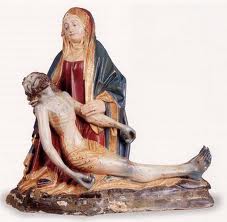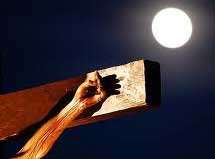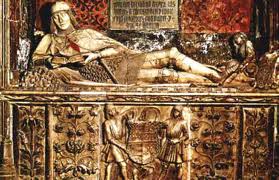Gothic: Alejo de Vahía
Alejo de Vahía was a Gothic sculptor who was actually of a more Nordic origin. However, as he spent most of his life and completed the majority of his works in Spain, he has been a subject of a spanish cultural immersion.
Alejo de Vahía (? -c.1515)

Nobody is certain of the date of birth of Alejo de Vahía, but experts predict that it was before 1475, as this is the year that we know is when his first recorded work was produced. He originally began his training in sculpture in France, but he later moved to Spain where he continued his studies and developed his career in sculpture.
Alejo de Vahía's works first appeared in Valencia around 1475, when he produced 'Dormición de la Virgen' (The Sleep of the Virgin). However after this piece was completed, Alejo de Vahía had to leave Valencia. He then settled in Becerril de Campos in Castille.
His style began to develop when he completed a piece for the 'Colegio de Santa Cruz' (School of Santa Cruz) in Valladolid from 1487 to 1491. This work for the school was a series of sculptures that depicted angels carrying the shields bearing the emblem of Cardinal Mendoza. These sculptures were used, among other places, in the corridors, above doorways and in the chapel. Alejo de Vahía also made the wooden doors that lead to the school's library.

In 1490, Alejo de Vahía also completed several sculptures for the province of Palencia, collaborating with some painters too. One of the major works completed in Palencia was for the Church of Saint Eulalia in the town of Paredes de Nava, for which he produced the 'Abrazo ante la Puerta Dorada' (Embrace at the Golden Gate) as well as several other sculptures. He also completed works for the Cathedral of Palencia itself.
One of the artists with whom Alejo de Vahía collaborated, was Pedro Berruguete. Together they produced the 'Retablo de Santa María de Becerril' (Altarpiece of Santa María of Becerril) in approximately 1490.
Following this, Alejo de Vahía worked in the Cathedral of Oviedo, in which you can find many of his works which were produced between 1491 and 1497. After these works were complete, Vahía returned to Valladolid. Here pieces that were clearly produced in his style include the commemorative sculptures made in alabster, a kind of gypsum, of a married couple who died and were buried in the Church of Santiago.
This led to Alejo de Vahía being asked to produce many more of these commemorative sculptures of people who had died. For example, Alejo de Vahía produced the sculptures that lie atop the tombs of Don Francisco Núñez and Diego de Guevara.
The list of works that have been attributed to Alejo de Vahía is numerous, meaning that he was an extremely popular figure within the Church. However, this was probably due to the fact that he did not charge the Church a great deal for the majority of his works.

His Nordic origins can be clearly seen in his style. Many of his works contain elements that can be found in other, more Northern, parts of Europe such as the Netherlands, Germany and Northern France.
Alejo de Vahía was sometimes geometrical or mathematical in his style. He had two set ways of producing the faces and heads of the figures in his sculptures. They would either be thin, long and oval shaped, or a circle shape. The hair of his figures was also completed in a pattern. His sculptures would typically have a central parting in their hair, which would then descend to their ears. At the ears, the hair would then become more wavy and divided. On male figures, there would also be two small, symmetrical curls on their forehead. Men's beards would also be mostly symmetrical as well.
With regards to the sculptures' bodies, Alejo de Vahía sculpted his figures as being tall with very high hips and relatively short legs. One of the typical features he would use, was to have the figure holding their hand with their palm facing outwards with the index finger and thumb together.
